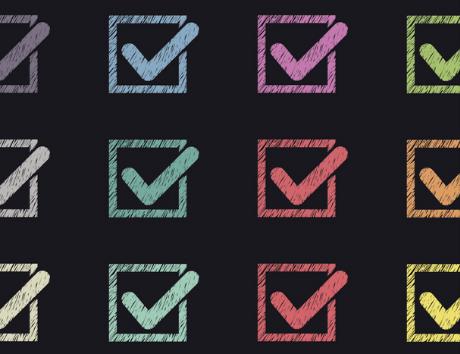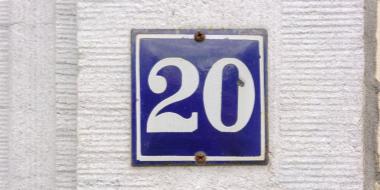Resume Checklist: How To Write a Winning Resume
Writing a resume can be difficult, especially if you’ve never written one before. There are a lot of different pieces of information that should be included, formatting considerations to keep in mind, and final checks to perform before you submit a resume.

This article will provide a comprehensive resume checklist to help you craft a professional, compelling resume that will help score you interviews and ultimately get you hired.
Resume Content Checklist
Begin by checking the content of your resume for the following:
Name and Contact Information
Ensure that your name and contact information are prominently placed at the top of your resume. Double-check your contact information for accuracy - if an employer can’t get in touch with you, you won’t be getting any job offers regardless of how qualified you are.
Resume Objective or Summary
Include a resume objective or resume summary beneath your name and contact information. If you are a student or recent grad with little or no professional experience, opt for a resume objective to show your education, qualifications, and career goals. If you have at least some professional experience, use a resume summary to briefly highlight your skills, education, and work experience.
Work Experience
If you have professional work experience, list each of your past job titles in reverse chronological order, starting with your current or most recent position. List no more than 15 years of work experience or only your jobs that are most relevant to the position that you are applying for.
If you don’t have professional work experience to list, consider including internships, volunteer experience, projects, and informal work that you’ve done (like babysitting or neighborhood dog walking).
Education
Be sure to include your education details, again in reverse chronological order (or with your most advanced degree listed first). If you are still in high school or college or high school is your highest level of education, include your high school information. If you’ve already graduated from college and/or you are pursuing or have already earned advanced degrees, omit your high school details.
If you have plenty of professional experience, keep your education section short - just list the school name, the date you graduated, and your major or degree. But, if you are a student or recent graduate, you can flesh out your education section with honors and awards, relevant coursework, your GPA (if it’s above a 3.5), extracurricular activities, leadership roles, and so forth.
Skills
Employers look for both hard skills and soft skills, so ensure that you’ve included both on your resume. Include a dedicated skills section, but also work your skills into your education section, work experience section, and resume objective or summary.
Optional Resume Sections
If you have space left over on your resume, you can add optional sections like languages, hobbies and interests, certifications, and so forth.
The typical length for a resume is a single page if you are a student, recent grad, or a professional with less than 10 years of experience or two pages if you have more experience than that.
There are some situations where your resume might be longer than that, but generally speaking, one to two pages is best.
All Content is Relevant
Ensure that everything you’ve included on your resume is directly relevant to the job that you are applying for. If it’s not, take it off. Employers will likely only spend a few seconds scanning your resume, so be succinct and selective with what you include.
Use Action Words
Use action words rather than passive language to describe your experience and accomplishments. This creates more impact and is more likely to impress employers.
Quantify Accomplishments
Back up your skills with quantified data and examples of how your skills have helped you succeed in past roles. Be sure that the numbers you include are accurate and honest, and that they cast your work in a positive light.
Target to Job Posting
Target your resume to every job that you apply for. Do this by identifying keywords and phrases in the job posting and addressing as many as possible of those keywords in your resume. Mention the company by name and include the exact job title that you are applying for.
Resume Formatting Checklist
Once you have all of your resume content added, it’s time to check the formatting.
Choose the Right Resume Format
There are three main resume templates: reverse chronological, functional, and combination. Be sure that you’ve used the right one for your situation. The reverse chronological format is the most common and it’s the most effective for the majority of job seekers. However, if you are applying to a specialized job or feel that the traditional reverse chronological format doesn’t adequately highlight your skills, use a functional or combination resume.
Easy to Read
Ensure that your resume is easy to read and scannable by avoiding huge blocks of text - use headings, subheadings, and bullet points to avoid this. Organize your resume in a way that’s logical and flows. Remember that a hiring manager will likely only spend a few seconds scanning your resume, so place your most impressive and relevant details at the top of the page.
Appropriate Font, Font Size, and Colors
Check that your resume font is professional and legible, and that the font size is readable (11 or 12 point font is standard). Don’t use any garish or loud colors that make it difficult to read your resume. While you can add pops of color here and there, don’t allow the color scheme to distract from the actual content.
Appropriate Margins
Resume margins can be 0.5, 0.75, or 1 inch. Avoid going any smaller with your margins, or you risk text being cut off when your resume is printed out, and the whole thing will look cramped.
Consistent Formatting Throughout
However you decide to format your past job entries and schools, be consistent with every listing in each category and use a similar format throughout the whole document for continuity’s sake. Make sure all of your headings are the same font and color, and if one heading is bolded and in title caps, all of your headings should be bolded and in title caps.
Final Resume Checklist
Give your resume a final once-over before you submit it, checking for the following:
Edit and Proofread
Carefully go through your resume several times to edit and proofread it. Nothing is more unprofessional than submitting a resume with spelling or grammar errors. It can be easier to print out your resume and proofread a hard copy.
Expert Tip
Save as a PDF
You can submit your resume as either a PDF or a Word Document (doc or docx file), but submitting it as a PDF ensures that it will look exactly the same to everyone who opens it. With a Word file, you run the risk that the employer might not have the same version of the program or the ATS scan could garble your resume. In either case, all of your careful formatting will be ruined and in some cases, employers might not even be able to read your resume at all.
Name the File Appropriately
Name your resume PDF something professional and simple like ‘FirstnameLastnameResume’ so it’s clear to employers what file they are looking at.
Key Takeaways
With this checklist, you can ensure that your resume includes relevant and impressive content, is formatted well, and gets submitted correctly. Check your resume against this list each time before you submit it to increase your chances of scoring an interview.
Not sure how to create a visually stunning resume? Consider using Jobseeker’s resume creation tool - you can simply enter in your information, choose from a library of polished templates and formats, select the style and color scheme that you like best, and download your finished resume instantly. Then get started applying to your dream job right away!
Impress potential employers with your resume
Follow step-by-step professional guidance to create a polished resume in minutes.



